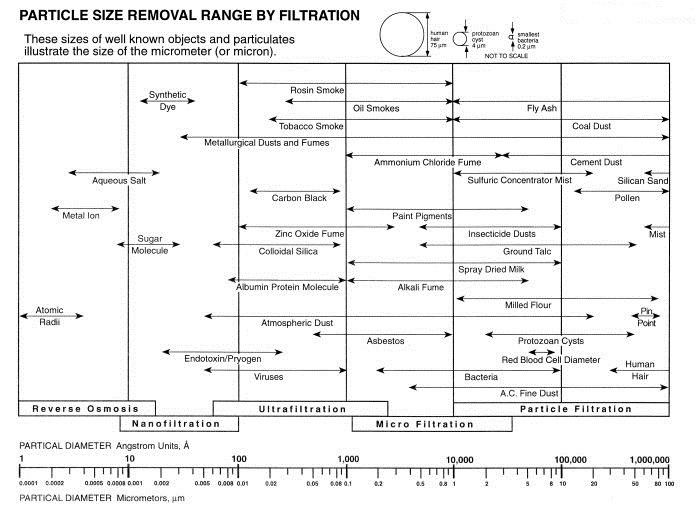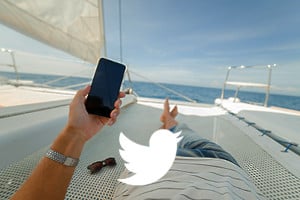Your Guide To Marine Watermaker Parts & Accessories
Note: Below is a general description and guide to the most common watermaker parts. If looking to purchase watermaker parts, we have a complete selection here: Marine Watermaker Parts
Besides diesel engines, marine generators and stabilization systems, watermakers are a key element in allowing you to freely navigate the globe. The ability to make freshwater is vital… Sure, you can stock up on bottle water, but imagine the cost in the end, and over time… and taking a clean, freshwater shower? Not possible without a watermaker.
The Little Wonder Watermaker by Village Marine makes all of this a breeze… and affordable. Little Wonder Watermakers will provide you with:
- Plenty of drinking water
- Ability to do laundry
- Freshwater toilets
- Clean water for washdowns
- Clean showers…
Five-star comfort and luxury, all while out on sea.
If considering purchasing a watermaker, or already have one, and have some questions on the Little Wonder parts (or watermaker parts in general), or any other questions, than this article should be useful!
Common Watermaker Parts & Accessories – The Vital Components to this Vital Component
Here are the most common watermaker parts, replacement parts and accessories. Some you will have to replace periodically:
Micron Prefilter Elements
A replaceable watermaker part designed to remove solid particles from the sea water. The removal of particles is achieved by porous material constructed so fluid can flow through the device while solid particles are retained, filtering out larger sediment to ease the demands placed on your watermaker. The duration between filter uses depends on the seawater conditions. When cruising for long periods of time (6-12 months) we recommend taking approximately 12 filters.
Carbon Flush Filters
Carbon flush filters are a watermaker part designed to remove chlorine from freshwater before it is put through the reverse osmosis (RO) filters, pumps and membranes. Carbon flush filters also remove tastes and odors from water.
Membrane Elements
 Membrane elements, such as the DOW Filmtec SW30 Membrane Elements, deliver high salt rejection while maintaining high production rates to obtain energy efficiency.
Membrane elements, such as the DOW Filmtec SW30 Membrane Elements, deliver high salt rejection while maintaining high production rates to obtain energy efficiency.
*Important tips for maintaining watermaker membrane elements:
- Keep membrane moist at all times
- Water produced from first two hours of operation should be discarded
- To prevent biological / bacterial growth during long periods of non-use of your vessel, it’s recommended that elements be immersed in a protective solution. The standard solution for long or short term storage should contain 1.0 percent (by weight) sodium metabisulfite.
Watermaker O-Rings
There are several types of O-rings for your watermaker. Here are the different O-rings, and their function / location:
End Plug O-Rings fit on the outside of pressure vessel end plugs, and seal between the end plug and pressure vessel housing. They keep your pressure vessels from leaking brine.
Face Seal O-Rings fit Parker Seal-Lok hose fittings that use an o-ring in a groove in the male part of the fitting that seals against a flat face in the female portion.
Filter Housing O-Rings fit standard watermaker filter housings and seal the bowl to the cap.
Product Water O-Rings fit inside pressure vessel end plugs, and seal between the membrane product water tube and end plug. These keep brine from mixing with your drinkable / usable water.
Swivel Port O-Rings fit over the swivel ports of certain pressure vessels, and seal between swivel ports and end plugs.
High-Pressure Pump Oil
Proper use of high-pressure pump oil greatly extends the life and performance of your watermaker membranes and high pressure pump (you do not want oil sitting in the pump with too much condensation in it). Scheduled maintenance is every 500 hours or so.
Note: In the case of your Little Wonder watermaker, you will want Parker/ Racor part number: #85-0050, High-Pressure Aqua Pro Pump Oil. This oil works with other watermakers as well; contact us with details of your specific model, and we can confirm.
Salinity Probe
A salinity probe provides water quality reading and an automatic diversion valve to ensure that only fresh water flows to the potable water storage tank.
- For a complete selection of Marine Watermaker Parts, visit us here. If we don’t have your specific part, we’ll get it for you. Some parts should work for different watermaker models.
Marine Watermaker FAQs
1) What is potable water, TDS, freshwater, drinking water, etc.?
Potable water is water that is safe to drink, and water with a total dissolved solids (TDS) concentration of 1000 parts per million (ppm) or lower is “acceptable”, and that anything below 600 ppm is considered “good” drinking water.
Most seawater is somewhere between 32,000 and 38,000 ppm, with the average being 35,000 ppm. Good drinking water contains only 0.6% salt.
2) Can you die from drinking seawater?
Yes, if you drink enough of it. While the body requires salt, large amounts can cause dehydration, seizures, unconsciousness and brain damage – and at the extreme, kidney failure and death. A sip or two won’t do any damage, though. In 1958 the World Health Organization (WHO) set the limit for potable water at 1500 ppm, but it changed to the lesser figure of 1000 ppm in 1984 based on taste considerations (anything above 500 ppm can have an alkaline taste).
3) How do marine watermakers work?
Watermakers make freshwater out of seawater via the process of Reverse Osmosis (RO). Regular osmosis (might remember the word from science class as a child) occurs in nature. If you place freshwater on one side of a semi-permeable membrane and seawater on the other, freshwater will move through the membrane to the seawater in an effort to achieve a balanced solution on each side.
However, if you place a large amount of pressure on the seawater side, and use a membrane designed to only allow water to pass through, the reverse of the natural process occurs, allowing freshwater to be pushed out of the seawater.
4) How safe is it to drink the water produced from watermakers?
Little Wonder watermakers, and other Parker / Village Marine watermakers, do not yield water with anything over 500ppm. In most cases, the salt content is far lower. As comparison, the City of Los Angeles Annual Water Quality report found a range of between 200 and 600 ppm for tap water, depending on location.
And remember, anything under 1,000 ppm is considered safe for the World Health Organization.
Besides this, watermakers don’t just filter out salt… they filter out bacteria, viruses and other “undesirables” (see interesting chart below – all the things floating around in seawater):

5) What is a UV purifier, and is it necessary if I have a watermaker?
Even though water leaving a watermarker should be free of any bacteria, contamination can occur once water comes in contact with a water tank that is frequently filled with tap water from the dock – so it is still recommended to us a UV purifier. A UV purifier exposes freshwater leaving the tank to UV-C ultraviolet light, which is called germicidal UV because of it’s ability to kill off bacteria, viruses and other biological contamination.
6) What factors can affect the performance of my marine watermaker?
High temperature water will cause the membrane to swell… producing more water, but with a slightly higher salt content. Low temperatures will cause the membrane to restrict, yielding less water, but with purer/ less salt content.
Other things that can affect the performance are the salinity of the water. For instance, the Mediterranean ocean has a ppm of 38,000 which will not only yield less water, but with a higher salt content.
This is where getting a quality watermaker makes a big difference.
7) How important is freshwater flushing of the watermaker?
Extremely important… allowing water to stay stagnant for too long invites bacterial and biological growth, which can clog membranes and seriously hinder performance. Flushing the system prevents this. Some marine watermakers provide an easy manual freshwater flush, others do it automatically on a periodic basis.
8) Is freshwater flushing the same as membrane cleaning?
Membrane cleaning is completely different, but also a very important part of maintaining your watermaker. Also known as chemical cleaning, chemicals are introduced into the system and allowed to circulate in a closed loop to remove the following from the membranes and other parts of the system:
- Oil
- Grease
- Biological matter
- Grime
- Scale
For more information on chemical cleaning of your watermaker, review your owner’s manual or contact the manufacturer of your model. If necessary, contact a repair specialist.
==============================
- Besides Little Wonder, we have various other Parker Racor watermakers, many capable of pumping out more GPH if necessary. For a complete list of our Watermakers For Sale, see here…
Questions? Let us know!
Have a good one!
CitimarineStore.com
info@citimarine.com
1 (800) 766-5256
Related:









2 Comments
Hi’ I have this water maker (The little wonder 160-200)
I am looking for a replacement drive motor for the main pump’
I believe the brand is Pacific Scientific’ 12V Dc.
Can this motor be purchased and shipped to Australia?
Please advise.
Thanks,
West.
Seadog marine Services
Hi West, please reach out to our sales team at sales@citimarine.com. They will be able to better assist you with this.
Thanks,
David
Citimarine Store